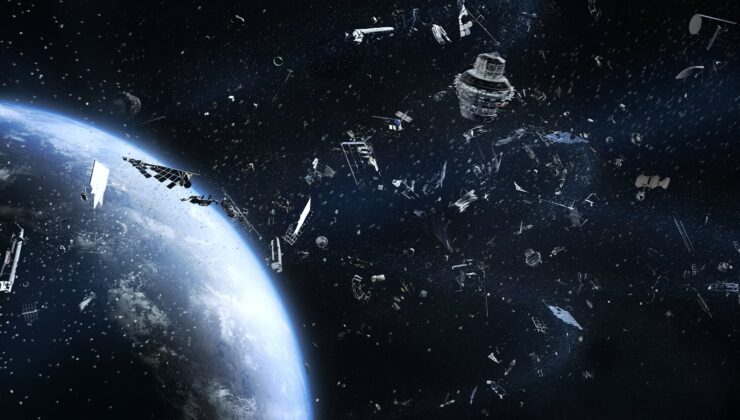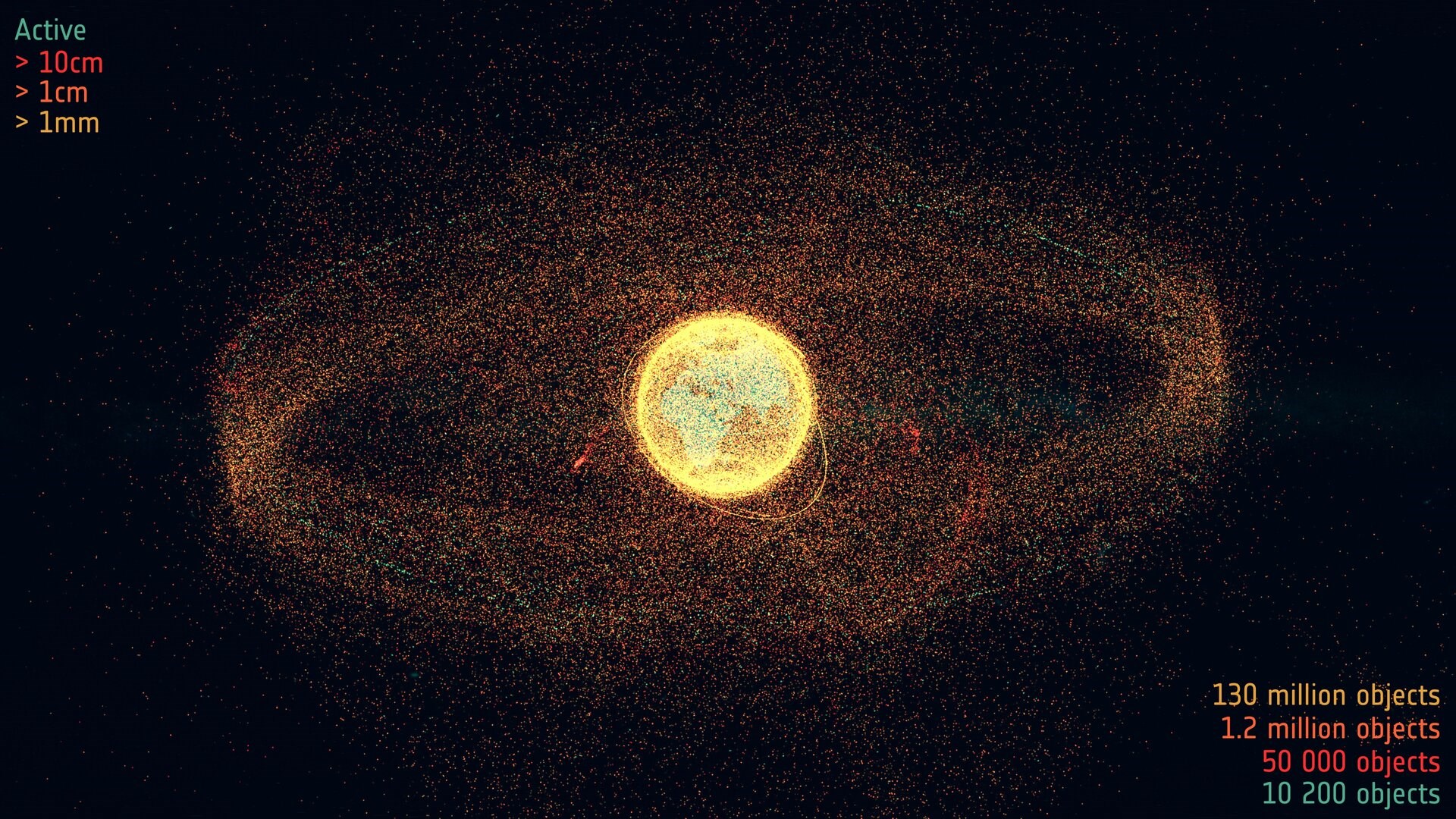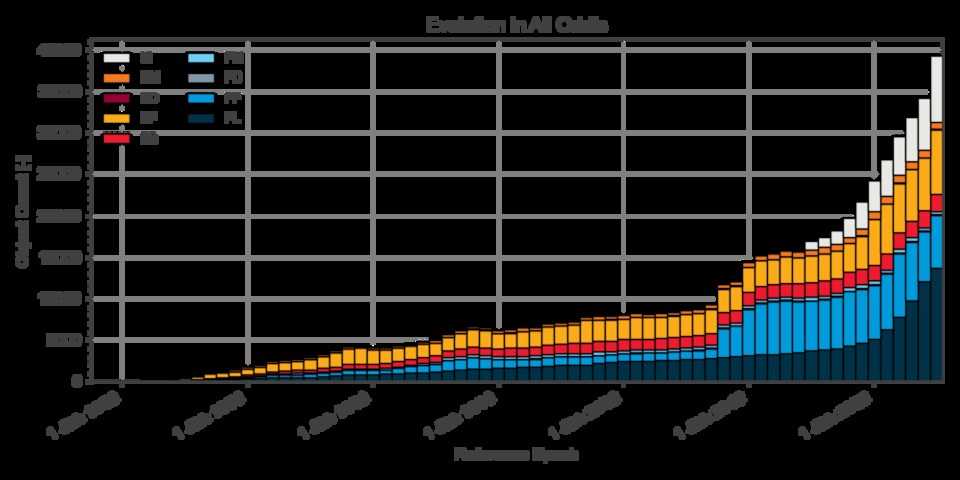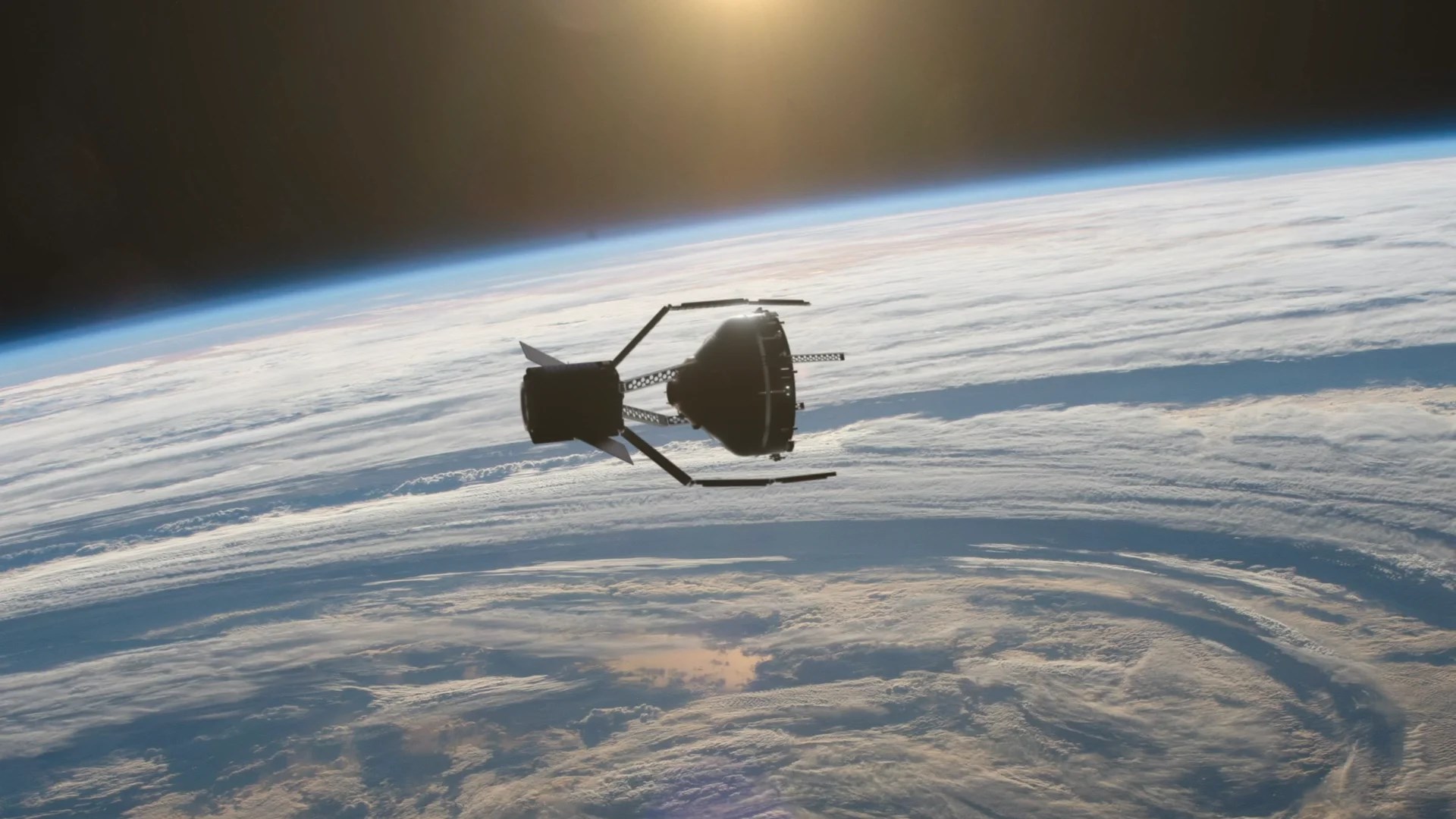

Decades of space exploration and satellite deployment have transformed Earth’s orbit into a sprawling junkyard. According to the European Space Agency (ESA) Annual Space Environment Report, the Low Earth Orbit (LEO) region is now cluttered with over 6,600 tons of space debris. This alarming figure not only exceeds NASA’s projection of 6,000 tons for 2023 but also underscores the escalating nature of this problem.

LEO, spanning from 160 to 2,000 kilometers above Earth, serves as a hub for essential technologies such as satellite communications, meteorological systems, defense mechanisms, and global navigation. ESA Director General Josef Aschbacher warns that these indispensable satellites, crucial to modern society’s infrastructure, face an increasingly serious threat from space debris.
Space junk comprises more than just defunct satellites. It includes remnants of launch vehicles, instrument covers, tools accidentally abandoned by astronauts, and components from rockets and engines. The proliferation of small fragments, particularly those resulting from collisions, explosions, or surface degradation, heightens the risk. An object merely 1 centimeter in size can impact with the force akin to a grenade. Currently, there are over 1.2 million pieces of debris larger than 1 centimeter orbiting Earth, including more than 50,000 objects exceeding 10 cm in size, each capable of generating hundreds of additional fragments in future collisions.

This increasing debris density elevates the risk of cascading collisions, a phenomenon known as Kessler syndrome. ESA’s modeling software, MASTER, indicates that debris now matches the number of active satellites, particularly at an altitude of 550 kilometers. The surge in space traffic, driven by mini-satellites and large constellation projects, not only spawns new debris but also heightens the chance of collisions with existing fragments. More than three thousand new trajectories were identified in the past year alone.

Unlike terrestrial littering, which is governed by legal restrictions, there are no binding international laws dedicated to preventing the accumulation of space debris. However, organizations like ESA have established engineering standards to mitigate debris creation during space missions. These include passivating energy sources post-mission, integrating safe de-orbit systems, and designing structures that burn up in the atmosphere.
Concrete efforts are underway to address this issue. ESA’s ClearSpace-1 mission aims to de-orbit the inactive PROBA-1 satellite by 2028. This mission involves a robotic vehicle developed by Swiss company ClearSpace, which will use a four-claw mechanism to capture debris. Similarly, Japan’s Astroscale is pursuing related technologies. Both companies have secured contracts from the UK Space Agency to remove defunct satellites. These initiatives could mark a pivotal moment in space debris management, although cleaning even a small portion of the existing debris field will demand years of effort and substantial resources.
ENGLİSH
6 gün önceSİGORTA
6 gün önceSİGORTA
6 gün önceSİGORTA
9 gün önceSİGORTA
11 gün önceSİGORTA
11 gün önceDÜNYA
20 gün önce 1
Elon Musk’s Father: “Admiring Putin is Only Natural”
11589 kez okundu
1
Elon Musk’s Father: “Admiring Putin is Only Natural”
11589 kez okundu
 2
7 Essential Foods for Optimal Brain Health
11358 kez okundu
2
7 Essential Foods for Optimal Brain Health
11358 kez okundu
 3
xAI’s Grok Chatbot Introduces Memory Feature to Rival ChatGPT and Google Gemini
10687 kez okundu
3
xAI’s Grok Chatbot Introduces Memory Feature to Rival ChatGPT and Google Gemini
10687 kez okundu
 4
Minnesota’s Proposed Lifeline Auto Insurance Program
9507 kez okundu
4
Minnesota’s Proposed Lifeline Auto Insurance Program
9507 kez okundu
 5
Introducing Vivo Y300 Pro+: A Blend of Power and Affordability
7442 kez okundu
5
Introducing Vivo Y300 Pro+: A Blend of Power and Affordability
7442 kez okundu
Veri politikasındaki amaçlarla sınırlı ve mevzuata uygun şekilde çerez konumlandırmaktayız. Detaylar için veri politikamızı inceleyebilirsiniz.